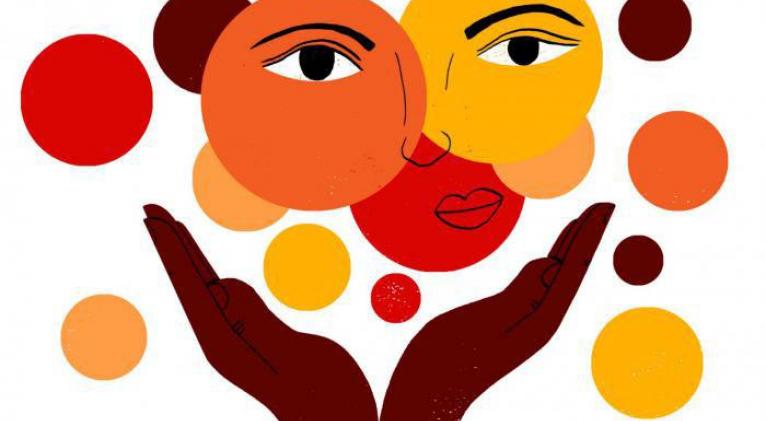Domestic violence: A new perspective on the legislative order
especiales

Myths about domestic violence are as old as every one of its manifestations, and are absolutely false.
Included among common misconceptions is the idea that only physical aggression constitutes violence and that such behavior occurs only in low-income households in marginal neighborhoods.
The reality is confirmed, however, on a daily basis, with more than enough eloquence. Domestic violence can be psychological, economic, or patrimonial, as well physical, and occurs in all types of families, regardless of economic or cultural level.
“She (or he) was looking for it,” “Jealousy is an expression of love,” “What happens in the family, stays in the family,” “to spare the rod is to spoil the child” are sayings that join the long list of myths that, in the opinion of experts, put the blame on victims, undermining their perception of the abuse, defusing their reaction and delaying condemnation.
Dr. Yamila González Ferrer, vice president of the Cuban National Union of Jurists (UNJC), as well as the Cuban Society of Civil and Family Law, states, “Cuba’s Constitution places the highest priority on prevention of and attention to violence in the family environment.”
Dr. González, also a titled professor at the University of Havana Law School, noted that the issue is given specific attention in the 2019 Constitution, addressing it in several different Articles - within families in number 85; gender violence in 43; and against girls, boys and adolescents in numbers 84 and 86.
The Carta Magna, specifically in Article 85 reads, “Family violence, in any of its manifestations, is considered injurious to the persons involved, to families and society, and is sanctioned by law.”
This stipulation, González notes, includes the three levels at which domestic violence leaves its negative impact: the individual, the family and the social – a fact that is sometimes overlooked, but key to the extension of the law’s protection to any manifestation wherever it may appear.
Nonetheless, the expert clarifies, “Except in cases when its severity makes criminal prosecution obligatory, domestic violence in Cuba today usually does not generate any real legal consequences.
“Thus the need to strengthen the improvement of legal mechanisms and public policies, to ensure that impunity does not exist and better protection is provided victims.”
Dr. González insists on the necessity of adopting new legal dispositions and modifying or perfecting existing ones, not only in the Family Code, but also in contractual, hereditary, due process and criminal law, to make possible the full implementation of the Constitution’s postulates.
The country’s new Family Code is therefore being updated to reflect Constitutional precepts related to addressing domestic violence and ensuring protection against all of its manifestations.
THE ROOTS OF PAIN
Dr. González, who also coordinates the UNJC’s gender equity project entitled Justicia en Clave de Género, insists on the importance of defining domestic violence, identifying it causes and various types, since the phenomenon must be well understood in order to confront and prevent it.
According to the professor, violence within the family context is an element within the generalized use of violence that exists in society. It is also a universal phenomenon, with concrete historical characteristics and particular features for each type of family member. It is a social problem that has dissimilar causes and dimensions, present in all existing types of families
The family’s basic patriarchial structure, Dr. González notes, makes it “one of the most violent social institutions, within which asymmetric power relations develop on the basis of gender, that are the guarantors of the legitimacy and maintenance of patriarchy as a system of domination.”
Given the interdependence existing within this environment, “Domestic violence must be understood as a process,” she continues, “It is no accident and does not appear suddenly overnight, but rather follows a painful course of development, gradually saturating the family climate via a repetitive cycle of behaviors which are very harmful to human beings.”
In her opinion, violence is a cultural problem, not entirely a legal matter, and its eradication therefore requires action on the social, educational and cultural levels, without dismissing use of the law when and how it is appropriate.
In conceptual terms, she emphasizes, “Domestic or intra-family violence is that which occurs within the heart of the family, and refers to any form of abuse occurring among its members, involving an imbalance of power that is used by the strongest against the weakest.”
Physical, psychological, moral, sexual, economic, and patrimonial mistreatment are all expressions of domestic violence, be they committed by both direct or indirect action, in which aggressors and victims maintain or maintained a conjugal or family relationship. The same applies in conduct of this nature occurring between persons co-habitating.
In the words of the expert, there are three basic modes in which domestic violence is expressed, since given the hierarchy of the patriarchial family, power is exercised on the basis of two fundamental lines: gender and generation.
GENDER VIOLENCE
This is a very specific type of violence, that is rooted in patriarchial culture, with its foundations in the greater power exercised by men as compared to women. It is sustained by sexist stereotypes which generate prejudice and lead to discrimination on the basis of sex, gender, sexual orientation and gender identity.
It can be physical, psychological, moral, symbolic, economic, or patrimonial, and has a negative impact on the enjoyment of rights, freedoms and basic wellbeing.
It occurs in family, workplace, educational, political, and cultural environments – and any other existing in a society. It’s most common, frequent and significant manifestation is violence against women.
Nonetheless, gender violence against men exists, as is the case with homophobia, for example, when men are attacked for having violated gender norms based on hegemonic masculinity; or are the butt of jokes and comments if they assume a share of domestic tasks and care of sons or daughters, even criticized by relatives, co-workers and friends.
VIOLENCE AGAINST OLDER ADULTS AND PERSONS WITH DISABILITIES
This type of domestic violence is based on disrespect for the aged and those with disabilities, given the decline in, or limitations on their physical, intellectual, economic, and social interaction capacity.
Its most common expressions are physical and emotional neglect; denial of hygienic, medical or nutritional support; underestimation; financial or patrimonial manipulation; and physical or verbal mistreatment.
VIOLENCE AGAINST GIRLS, BOYS & ADOLESCENTS
This type of domestic violence occurs is directed toward girls, boys and adolescents as a result of their condition as developing persons. Even when the aggression is not aimed specifically at them, it is considered direct violence since the adequate development of the young person’s personality is affected, as well as his or her sense of security and confidence in others, significantly impacting his or her social life.
Regarding this sensitive issue, some believe that if violence within the heart of the family is not physically directed toward a son or daughter, there is no significant impact, when in fact the damage caused by living in a violent environment severely affects the full development of a child’s personality and can have serious negative consequences in the future.
Whatever the nature of conflicts, Dr. González insists, they cannot be resolved with the use of violence, but rather through “communication and negotiation,” adding, “Urgently needed is education and a culture of peace, of respect for human rights, emphasizing the necessity of learning to live together and interact with others harmoniously.”














Add new comment